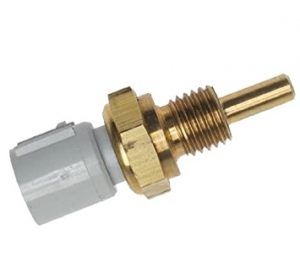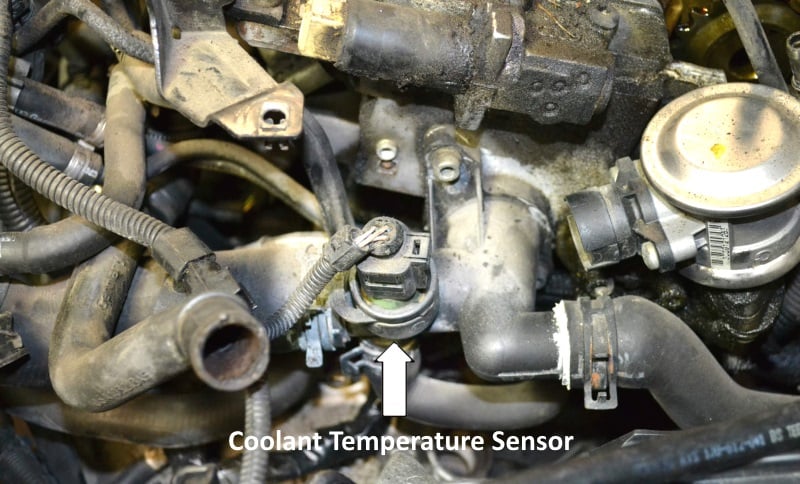About the coolant or radiator temperature sensor

If you’ve ever cruised down Te Rapa straight in Hamilton during a boiling January day or tackled those Bleak Street foggy mornings in winter, your car’s engine is dealing with some pretty wild temperature swings. That’s where your coolant temperature sensor comes in. It’s a little gadget most drivers never see, but it’s busy all the time, checking your engine’s coolant temp and telling the computer what’s going on under the bonnet.
Your engine’s computer (the ECU) uses info from the sensor to get stuff just right — like how much fuel it needs to squirt in, when to spark the ignition, even when to switch on the cooling fan. When it’s working as it should, you get solid performance, better fuel economy, lower emissions and less risk of ending up stuck on the side of Wairere Drive with a steaming engine.
If things start getting too hot — say, you’re idling in Cambridge traffic during an event, or crawling along Ulster Street after a rugby game — the temp sensor is what helps the car protect itself. It tells the ECU to cut back performance, avoid more heat, and hopefully save you from a costly repair.
Your dash temp gauge, the engine warning lights and those dreaded overheating symbols — all rely on good info from this wee sensor. If the reading looks dodgy, you might see your check engine light pop up for no obvious reason. Or worse, you might miss the warning signs that your engine is actually running too hot. Want to dive deeper? Learn more about the coolant temperature sensor.
What happens when the coolant temperature sensor packs up?
Engine running hot or cold (for no good reason): Seen it heaps, especially on older Honda Civics or a few imported Mazdas from Morrinsville. If the sensor’s bung, the ECU can’t read the real engine temp. That means it guesses based on default settings, which messes with emissions, can make your engine burn extra fuel, and just feels sluggish. Sometimes the engine will run hot and you’ll see that temp needle drifting higher than normal, even if you’re just doing a quick trip to Rototuna.
Your fuel economy takes a nosedive: We get a fair few folks from Ngaruawahia and Tamahere in with Subaru Outbacks and a whole bunch of Euro cars (Peugeot 307s or those Skoda Octavias) complaining of burning way more fuel than usual. Blame often falls on a faulty temp sensor tripping up the fuel injection – running the engine ‘rich’ all the time, turning petrol into black smoke out the exhaust.
Check engine light comes on: Doesn’t matter if you drive a Suzuki Swift or a Toyota Highlander, that pesky check engine light and rough running can be a dead giveaway. Some Renaults and even a few Kia Sorentos have come in with little more than a check light and hard starting, especially on cold Waikato mornings. Plug in a scan tool, and you’ll usually see a temp sensor code right away.
Hard to start when cold: If the sensor tells your car’s computer the engine’s already toasty-warm when it’s actually cold out (say, you’ve parked overnight on a chilly Raglan street), you might battle to start up, especially older diesels and some hybrids.
Why it’s worth fixing your coolant temperature sensor quickly
Kiwis love saving money at the pump, and no one wants an unexpected breakdown near The Base or out in Gordonton. Anything that messes with your fuel use, raises emissions or kills reliability is worth sorting ASAP. Letting a dodgy coolant temp sensor go can cost you twice – in burnt fuel and potential engine damage from overheating.
Getting a new sensor fitted usually isn’t a massive job, but it makes a big difference. Your engine runs smoother, emissions come down (handy for passing WOF Hamilton tests) and you’re less likely to cop a hefty repair bill from overheating on a hot summer run through Whatawhata.
Coolant Temperature Sensor Replacement in Hamilton
Think your coolant temp sensor is on the blink? Maybe you’ve noticed your Holden Captiva or Nissan Note chewing through fuel, or the temp warning light flickers more than it should? Bring it in. At Grimmer Motors, our team can check your sensor using the latest diagnostic gear, sort out any ECU codes, and swap in a new sensor if you need one.
We see all sorts: from a Lexus CT200h with erratic dash readings to a Hyundai Tucson that’s struggling to keep cool after hitting one too many Boundary Road potholes. No stress, we’ll get you sussed, back on the road and running sweet – whether you commute round Hamilton or zip out to Te Awamutu for work.
If you’re after a top-notch car service in Hamilton, or need a new coolant temperature sensor, give us a yell at Grimmer Motors. We make it easy to book in and keep your car in top nick.

